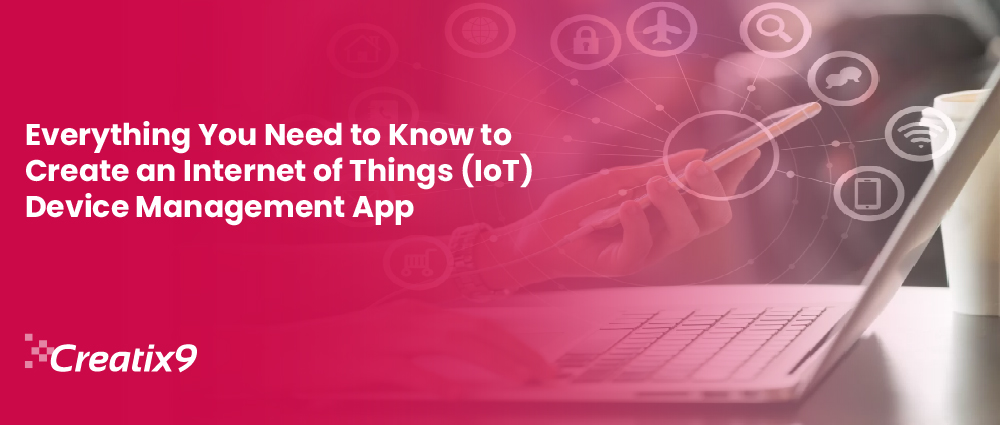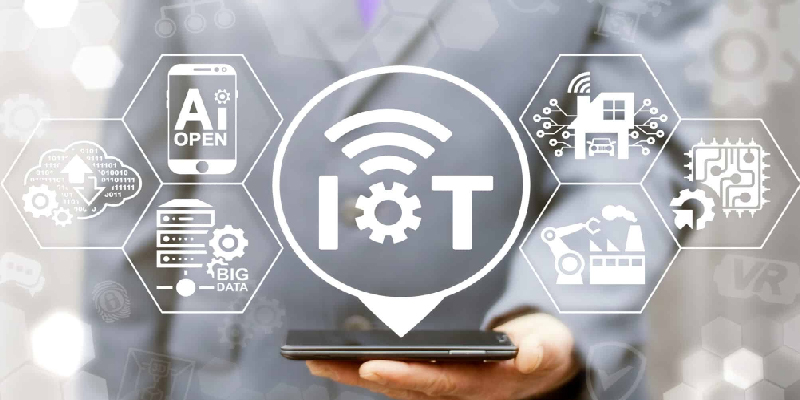
For nearly two decades, the Internet of Things (IoT) market has been known to be “the next big thing,” It is just now beginning to gain a grip in the commercial and consumer sectors. Smart homes and home automation allow homeowners to conveniently operate electronics like lights, blinds, and cameras from their smartphones. Companies and factories use IoT’s many applications to cut costs and boost productivity.
Research says that the Industrial Internet of Things or IIoT and IoT markets are rising amazingly. The global IIoT market is expected to rise from $1.67 billion in 2018 to $12.44 billion in 2024, an enormous compound annual growth rate of 40 percent, according to a report by IoT Analytics in Thomas Insights.
The advantages of mobile apps for IoT management shows the anticipated growth of the markets for managing IoT and IIoT devices.
Look at this blog for creating an IoT device management app if your company is interested in capitalizing on this developing industry. Here Creatix9 US, with top CMS enterprise portal and business automation services company for IoT, will analyze the increasing demand, discuss some of the most widely used apps in this field, and present a high-level overview of the app creation process.
Analyzing Development in the IoT Market
Why are IoT and IIoT growth finally accelerating? Because of the popularity of smart houses. Everyone can buy internet-connected lighting, entertainment, and security gadgets. For instance, a Roku set-top box or smart TV can control Roku IoT devices.
5G networking improves IIoT and IoT device management apps with minimal latency and offers a great experience controlling connected devices. Poor-performing apps fail in competitive markets.
Another IIoT possibility is using a local network for low latency in a factory for device management. Consumer IoT and device management apps need the excellent performance of this low latency.
Several sectors require real-time data analytics, which fosters the expansion of corporate IoT. Apps for remote monitoring and security are popular. Fast data extraction from IoT devices that generate plenty of data is a competitive advantage. IoT devises management apps, especially those with real-time data analytics, need fast, flawless performance.
Which Features Does an App for Managing Internet-Enabled Devices Offer?
IoT smartphone apps have a lot of valuable features beyond managing the operation of connected devices. When overseeing a network of devices spread out over a facility like a factory or a hospital, keeping checks on each one’s functioning is crucial. When an update fixes a security flaw, the ability to set up the firmware update remotely becomes even more critical.
In earlier times, security concerns are one of the problems that slow down the expansion of the Internet of Things. This issue was brought to light earlier this decade related to hackers using Internet-connected household equipment to send phishing emails.
Therefore, IoT administrators must have the tools to identify any vulnerabilities in the networks of remote devices they manage.
Some big IoT device management platforms offer data analytics, the discussed above real-time cybersecurity monitoring, and a dashboard view giving insights on the complete IoT installation. Some platforms are designed for use in a smart home, while others are for a commercial or industrial setting.
Remember that some IoT apps can function on mobile platforms like smartphones and tablets, while some more advanced systems also use a desktop version. Early in the project, you must decide which platforms your management software will support. Do this before developing code or creating the user interface wireframes.
Top Applications for Managing Internet of Things Devices
 Look at these examples of the best IoT device management apps to get ideas for the features, functionality, and interface designs that your app should have. Remember that many of these include substantial cloud capability, allowing seamless access regardless of the user’s location.
Look at these examples of the best IoT device management apps to get ideas for the features, functionality, and interface designs that your app should have. Remember that many of these include substantial cloud capability, allowing seamless access regardless of the user’s location.
Ayla Internet of Things (IoT) Platform
With the Ayla IoT Platform, manufacturers and developers of linked smart home products can access a powerful IoT solution. It has many valuable features, such as setting up and installing things with wi-fi and Bluetooth. It works well with many different speech integration systems. Moreover, it enables customers to design sophisticated IoT management timers, routines, and scenes for their homes. This feature is available within the Ayla app but can also easily integrate with a client’s custom app, involving customizable branding.
The platform can communicate with both Ayla-own device firmware and third-party devices. As noted before, this also applies to developing bespoke mobile apps for managing devices, adding further versatility. Cybersecurity is integral to the design of every component of the Internet of Things infrastructure.
IoT in a Box
 IoT in a Box allows you to connect and manage your devices using a plug-and-play approach. The platform integrates high-quality monitoring software with high-quality hardware to provide real-time reporting and alerts through SMS. It’s compatible with a wide variety of standard sensing hardware and IoT gateways to facilitate remote device tracking. Customers in various sectors can benefit from this strategy for meeting compliance rules.
IoT in a Box allows you to connect and manage your devices using a plug-and-play approach. The platform integrates high-quality monitoring software with high-quality hardware to provide real-time reporting and alerts through SMS. It’s compatible with a wide variety of standard sensing hardware and IoT gateways to facilitate remote device tracking. Customers in various sectors can benefit from this strategy for meeting compliance rules.
The system can connect to numerous cloud-based services for real-time analysis and data storage. The included app takes advantage of this third-party integration to deliver a straightforward mobile UI that prioritizes providing quick and unexplored solutions. Real-time reporting, logging, and alarms are also included, in addition to the ability to create and manage accounts, users, businesses, and locations.
Support of open-source platforms and REST APIs makes integration straightforward. Besides being compatible with several wireless IoT sensors and other devices, your management app should offer comparable integration support.
IoT Azure Hub
Some large corporations have global IoT infrastructures with thousands of devices. Support for robust cloud integration becomes crucial if your device management app intends to target these enterprises. Likewise, if you want to approach your management app similarly, this suite offers ideas and inspiration.
Access any Internet of Things (IoT) device in a company’s IT network with the help of Azure IoT Hub’s cloud-hosted connectivity. It acts as an extra layer of security for communication between an app and the various endpoints. Microsoft provides an extensive set of IoT-specific apps, such as Azure IoT Edge and Azure IoT Central. Once again, this suite can be a source of ideas and inspiration for your management app’s suite-like design.
Details to Keep in Mind while Creating an Internet of Things App
Managing an Internet of Things (IoT) device management app development project’s many moving parts is challenging. You can broaden the project’s scope via real-time reporting, data analysis, and desktop and mobile apps by constructing a full suite like Microsoft’s Azure IoT collection. As a result, it’s crucial to divide the whole project into smaller, more manageable chunks and assign specific teams to work on each component. Once again, though, the use of contemporary methods is of paramount importance.
Three main areas of software development are required for any app to control IoT devices.
- Developers are proficient in mobile platforms, which can create apps that make managing Internet of Things devices straightforward. While designing for mobile devices, keep the user interface as clear as possible.
- Developers specializing in desktop platforms must create the user experience for software that manages an IoT network’s devices and provides data analytics, reporting, and other related features. Notably, depending on the choices made in the requirements phase, some of these functions can exist within a web browser interface.
- Back-end developers having a cloud knowledge are essential to manage device connection, firmware updates, data storage, security, and other aspects of IoT devices. Knowledge of multiple data and network protocols is required. If you want your software to be compatible with various devices, it should support as many of these protocols as feasible.
Hiring some embedded systems developers for top mobile app development, CMS enterprise portal and ERP solutions services for IoT to improve the hardware’s firmware is also a good idea. The previously mentioned IoT in the Box system uses various generic IoT devices for multiple applications to reduce the time spent developing bespoke firmware. It’s still another thing to decide at the beginning of the project.
It would be best to prioritize scalability as you design the device management app’s architecture. To attract businesses as clients, it is crucial to manage thousands of IoT devices in a cloud-hosted environment.
Conclusion
Just contact the experts at Creatix9 US if you have a concept for an Internet of Things app and need assistance with IoT software development. We offer the top auditing app creation and business automation services. We have a wealth of experience in this space, with the rare combination of strong technical skills and broad-ranging business acumen. Contact us to schedule a time to discuss the possibility of forming a collaboration.

